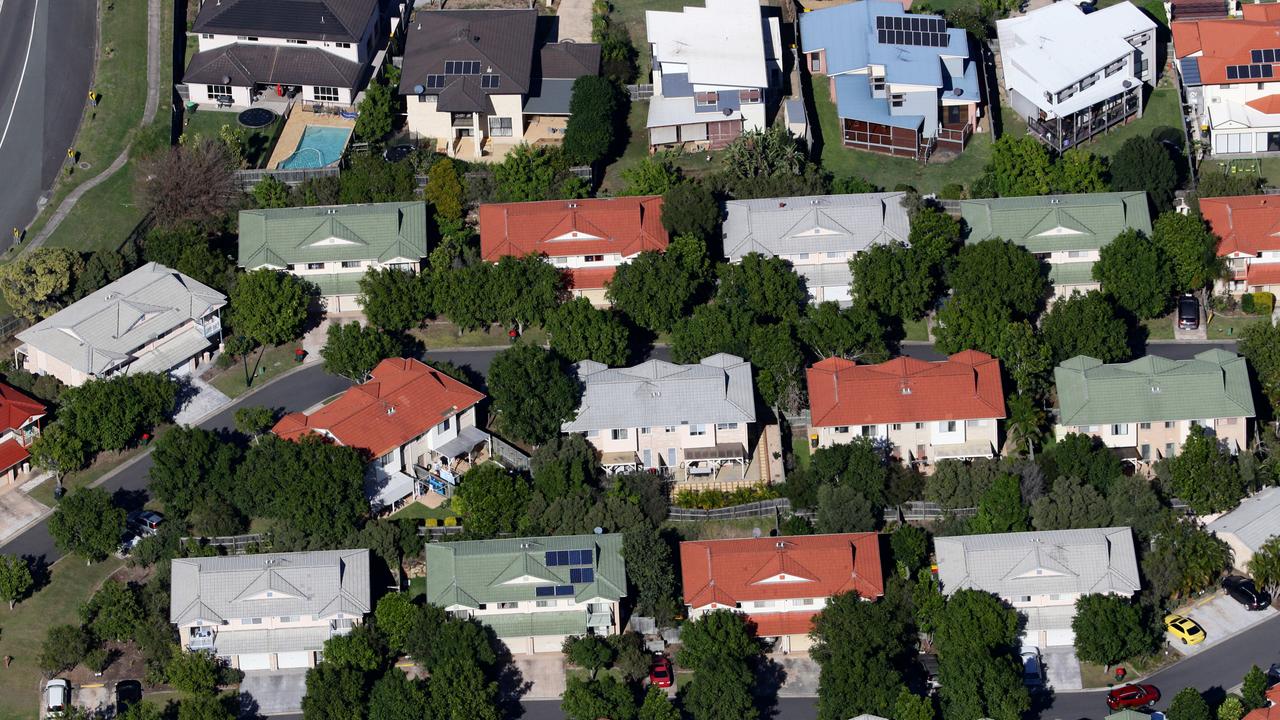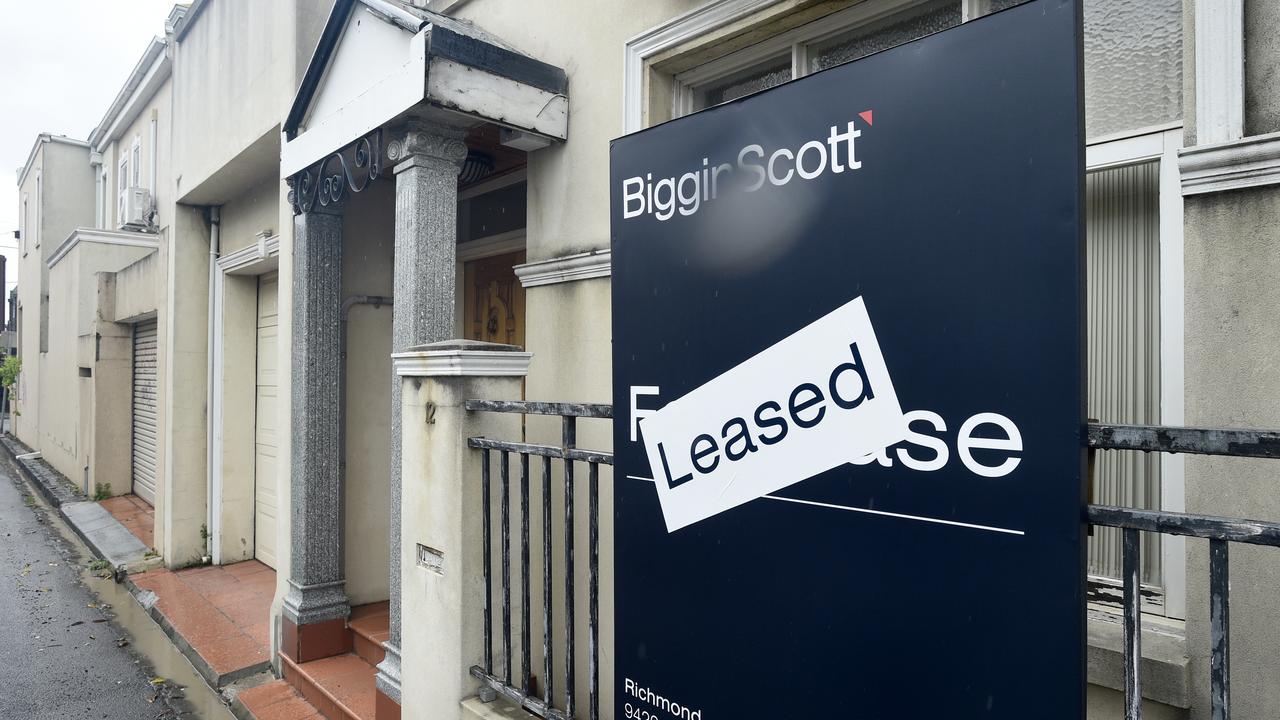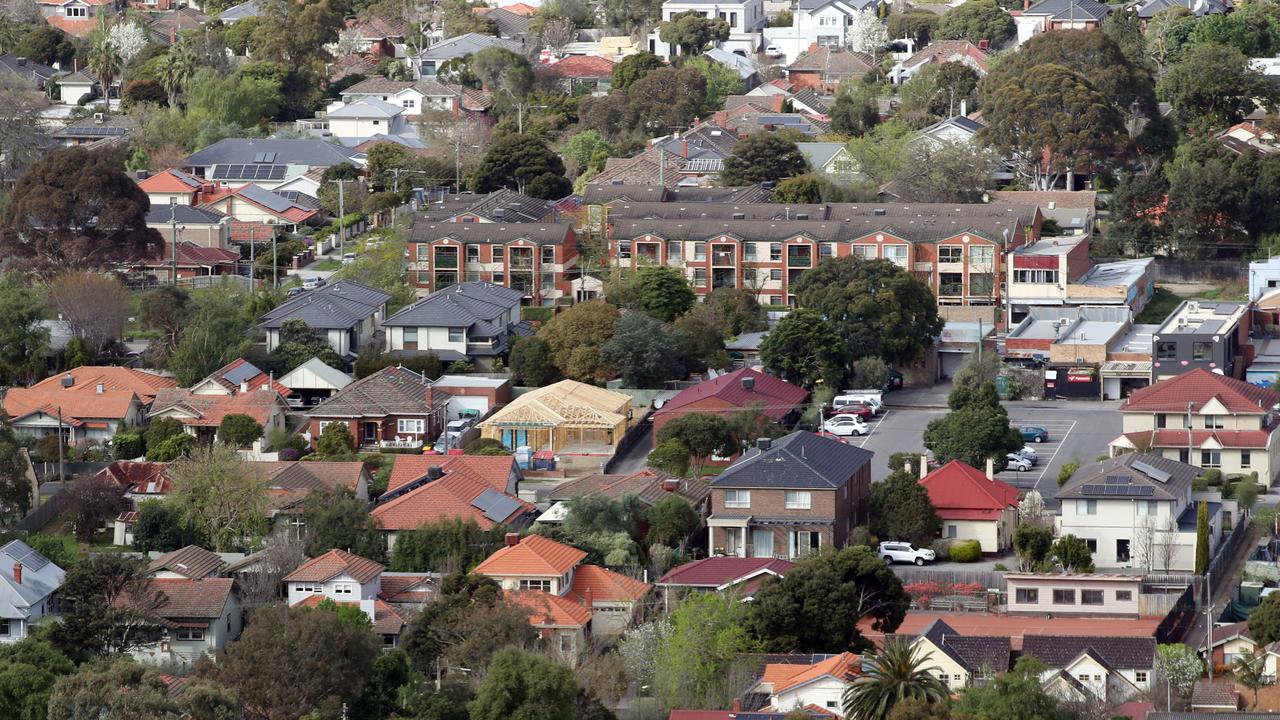Housing drag: Australia’s ‘major weakness’ exposed on global scale
Australia’s housing crisis has wreaked havoc on the international rankings of all its capital cities, but damning scores in the global index due to unaffordability are yet to cull demand. DETAILS
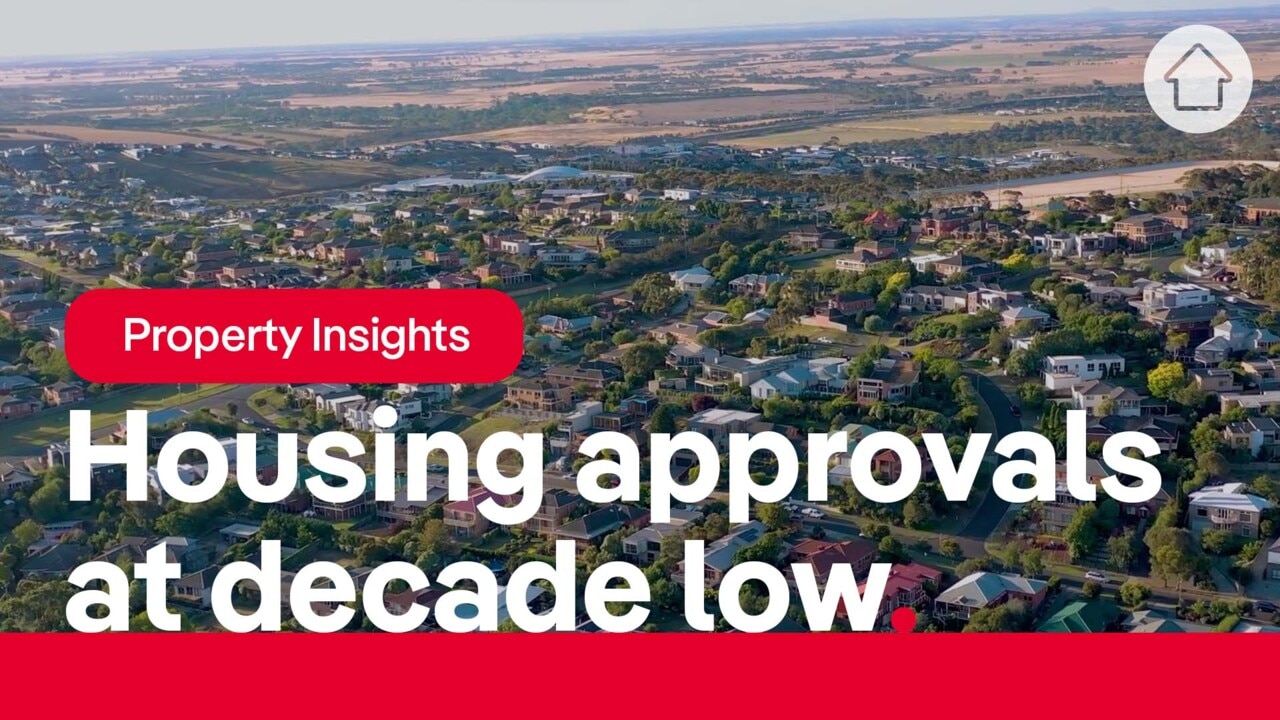
Property
Don't miss out on the headlines from Property. Followed categories will be added to My News.
Australia’s housing crisis has wreaked havoc on the international rankings of all its capital cities, but damning scores in the global index due to unaffordability are yet to cull demand.
Every state capital in the latest Oxford Economics Global Cities Index has taken a housing drag hit in its Quality of Life score thanks to rampaging property prices, unaffordability and slow internet speeds – pushing down overall global rankings.
MORE: Judges give record score for Australia’s best outdoor project
Rent versus buy: How suburb numbers stack up across Qld
How many properties your federal politician already owns
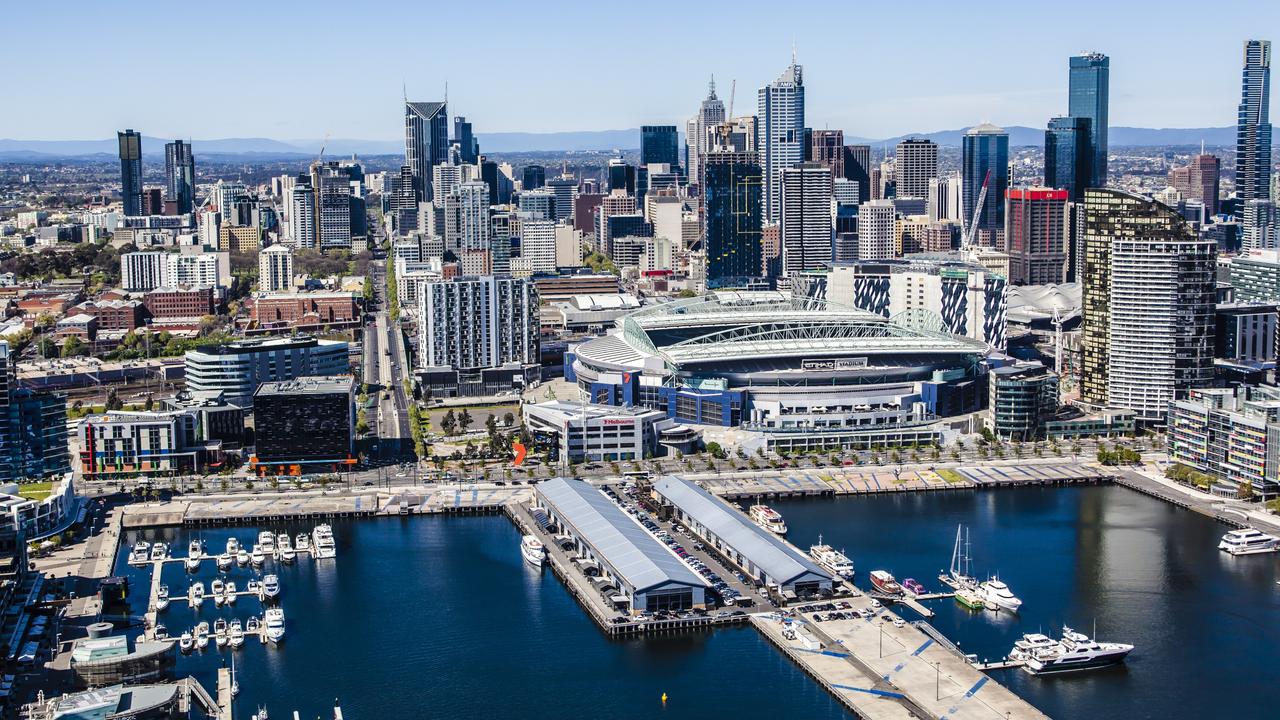
The highest ranked Australian city was Melbourne – which squeezed into the top 10 despite its shocking 185th placing for quality of life.
“The city’s fast-growing population has made housing increasingly unaffordable, and as is the case in most Australian cities, Melbourne suffers from slow internet speed due to structural under-investment into broadband infrastructure,” the report said.
Sydney was ranked seven places below Melbourne – 16th overall globally, thanks to its horrific quality of life score which was 230th in the world.
Oxford Economics said while Sydney had a lot going for it “a major weakness in the form of high housing costs persists”.

“Property prices and rents have risen steeply in the city due to rapid growth in population, and the housing supply has not been able to keep up. Indeed, Sydney’s housing supply is constrained by its geographical location on the coastline and regulatory restrictions protecting heritage neighbourhoods; this makes new construction or increases in density difficult. As such, residents of Sydney have very high levels of housing expenditure, which weighs considerably on the city’s Quality of Life score.”

Perth came in seven places below Sydney – beating Brisbane and Canberra to become the third highest ranked city in Australia and 23rd globally. It too might have ranked higher if not for its 135th place for quality of life, though Perth’s lower score had more to do with its vast income inequality between mine workers and the rest of the population as well as the city’s remoteness and slow internet.

Brisbane ranked fourth in the country and 27th globally, with its score dragged down by quality of life “in large part due to the high cost of housing”, the report said.
“Indeed, the city’s growing population has caused demand for housing to increase, while supply has struggled to keep pace. Low internet speed is another component weighing down Brisbane’s quality of life score. Like many of its Australian peers, the city suffers from its poor internet infrastructure, caused by long term under-investment and mismanagement.”
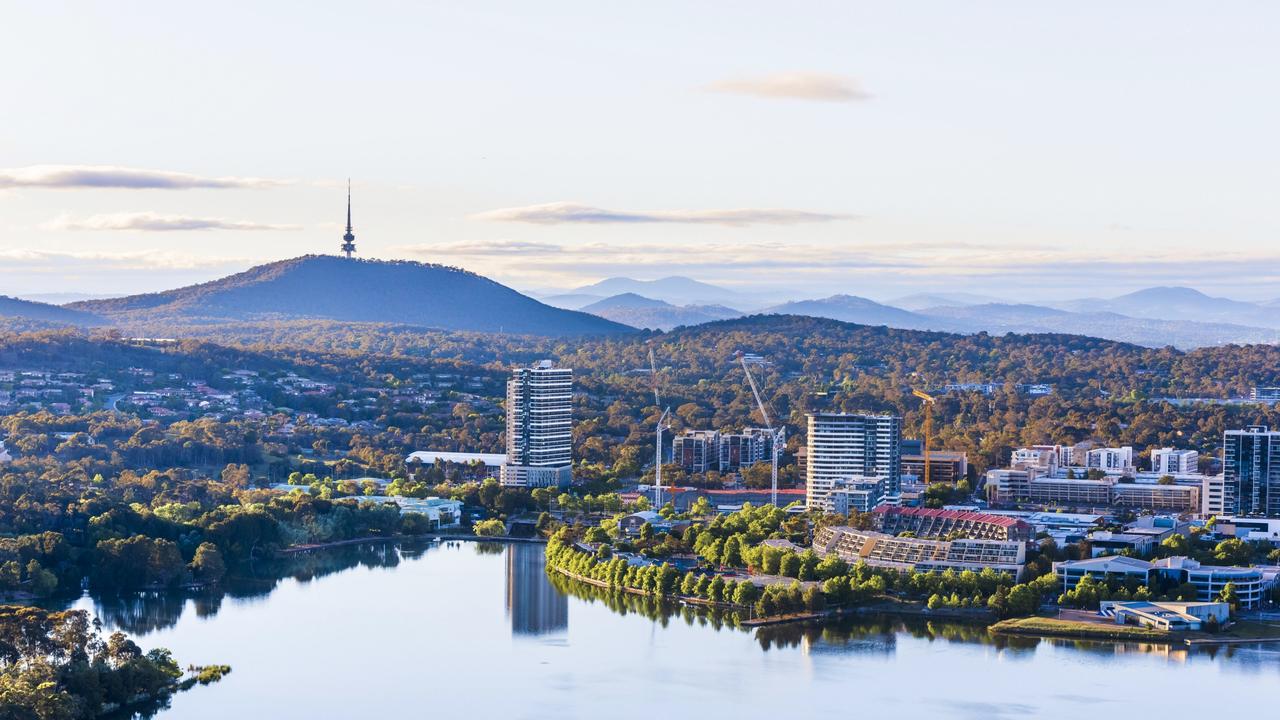
Canberra was the fifth highest Australian city on the index – coming in 44th globally – and surprisingly, despite its record property prices and tight vacancy rates, it had the second highest quality of life ranking in the world.
“This impressive feat is driven by the city’s high incomes and low degree of income inequality, due to the availability of stable and high paying government jobs,” the report said.
“The city also has excellent healthcare facilities and ranks among the highest in the world for life expectancy.”
No other Australian city made the global top 50 index but soaring unaffordability is yet to impact international demand for property here fully – with searches from overseas for properties on realestate.com.au rising 0.8 per cent year-on-year in April.

Latest PropTrack data shows overseas search volumes sitting above the five-year average to April for both rent (+32pc) and to buy (+20pc) on realestate.com.au.
Queensland was the most popular state in searches – led by demand for the Gold Coast.
“Overseas property seekers continued to be captivated by the sunny climate of Gold Coast and Brisbane, ranked the first and second most searched-for locations in the country for international buyers,” the PropTrack report said.

“Both cities were also popular for overseas prospective renters, with Gold Coast and Brisbane ranking third and fourth behind Sydney and Melbourne for international rental searches.”
The United Kingdom (+8.1pc), New Zealand (+2pc) and China (+0.5pc) were the only countries to show yearly growth in rental property searches.
“A decline in visas granted to international students has curtailed the influx of new arrivals to Australia, which has likely impacted the decline in overseas rental searches and is anticipated to continue.”
Oxford Economics Global Cities Index Rankings:
9: MELBOURNE
Economics 16th
Human Capital 11th
Environment 30th
Quality of life 185th
Governance 18th
Key 2023 Figures
GDP: US$292billion;
GDP per person: US$56,300
Population: 5.2 million
Strengths
High life expectancy
Many universities
Large foreign-born population
Weaknesses
Older age profile
High housing expenditure
Slower internet speed
16: SYDNEY
Economics 19th
Human Capital 9th
Environment 363rd
Quality of life 230th
Governance 18th
Key 2023 Figures
GDP: US$339 billion
GDP per person: US$62,500
Population: 5.4 million
Strengths
Many universities
Large foreign-born population
Strong institutions
Weaknesses
High housing expenditure
More natural disasters
Slower internet speed
23: PERTH
Economics 57th
Human Capital 22nd
Environment 34th
Quality of life 135th
Governance 18th
Key 2023 Figures
GDP: US$223 billion
GDP per person: US$96,600
Population: 2.3 million
Strengths
High GDP growth
Good air quality
High GDP per person
Weaknesses
Less economic diversity
Larger temperature anomalies
Slower internet speed
27: BRISBANE
Economics 41st
Human Capital 41st
Environment 135th
Quality of life 146th
Governance 18th
Key 2023 Figures
GDP: US$156 billion
GDP per person: US$57,400
Population: 2.7 million
Strengths
High life expectancy
Large foreign-born population
Strong institutions
Weaknesses
More natural disasters
Larger rainfall anomalies
High housing expenditure
44: CANBERRA
Economics 179th
Human Capital 90th
Environment 194th
Quality of life 2nd
Governance 18th
Key 2023 Figures
GDP: US$33 billion
GDP per person: US$70,900
Population: 470,000
Strengths
High life expectancy
High educational attainment
Lower income inequality
Weaknesses
Less economic diversity
More natural disasters
Slower internet speed
(Source: Oxford Economics)
Originally published as Housing drag: Australia’s ‘major weakness’ exposed on global scale


